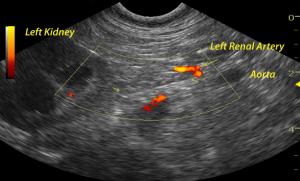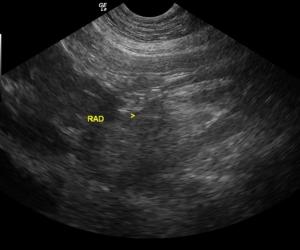ADR = "Aint Doing Right" is often an adrenal problem.
Check out what we may have been missing for years in adrenal pathology with Bailey the Basset Hound; the May 2011 SonoPath case of the month. Case presentation by Lindquist DMV, DABVP.
It may be easy to find adrenal masses as a cause of the "ADR" patient. But what if we can't find the adrenals at all when we normally can readily? Or at least have to struggle to see them and there are vague clinical signs such as diarrhea, anorexia, weight loss, lethargy? Start thinking Addison's disease and the sonographic criteria of Addisonian adrenal glands starting with Bailey the Basset; the Sonopath May 2011 Case Of The Month.
Clinical sonographer: Lindquist DMV, DABVP.
Note: Sonopath.com is currently performing a large study on sonographic criteria for Addisonian adrenal glands to further investigate this type of presentation for typical and atypical hypoadrenocorticism in dogs.
History: (Allicen Kohmescer): An 8-year-old FS Bassett Hound dog was presented for crying throughout the night and vomiting food, fluid, and mucous. On physical examination, she was found to have pink mucous membranes and a normal body temperature. She had bilateral conjunctivitis as well as a bilateral otitis externa (Malassezia). No abnormalities were noted on auscultation of her heart and lungs. The patient was treated symptomatically as an outpatient with anti-emetics and gastroprotectants. Six days later, the dog returned as she was depressed and lethargic. She was in lateral recumbency upon presentation and she was hypothermic with pale pink, tacky and cold mucous membranes. She was admitted to the hospital for I.V. fluid therapy and blood work. The serum biochemical profile revealed elevated liver enzyme activities (ALT, AST, GGT), azotemia, hyperproteinemia, hyperalbuminemia, hyperglobulinemia, hyperbilirubinemia, hyperkalemia, hypercalcemia, hyperphosphatemia, hypermagnesemia, hyperamylasemia, and an elevated CK. The CBC showed an elevated hemoglobin and leukocytosis consisting of a monocytosis and eosinophilia.




Comments